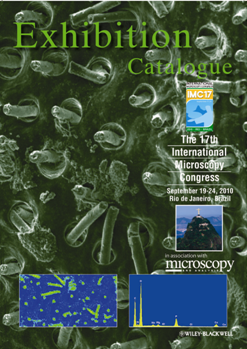Members Login

Channels
Special Offers & Promotions
Thermo Fisher Scientific Facilitates the University of Maryland Dental School to Study
 Thermo Fisher Scientific Inc., the world leader in serving science, today announced that the University of Maryland Dental School is utilizing Thermo Scientific EDS detectors to further investigate the long-debated nature of "worm-like" cylindrical structures observed in the dentinal tubules of extracted human teeth. Utilization of the EDS detectors has made it possible to use scanning electron microscopy technology to obtain clear micro-images of the challenging structures, shedding new light on their chemical nature. The findings of this breakthrough research was unveiled in a presentation titled "Scanning Electron Microscopic Study of Cylindrical Structures Observed in Dentinal Tubules: The Controversy Continues", at the 17th International Microscopy Congress (IMC17), September 19-24 2010, Rio de Janeiro, Brazil.
Thermo Fisher Scientific Inc., the world leader in serving science, today announced that the University of Maryland Dental School is utilizing Thermo Scientific EDS detectors to further investigate the long-debated nature of "worm-like" cylindrical structures observed in the dentinal tubules of extracted human teeth. Utilization of the EDS detectors has made it possible to use scanning electron microscopy technology to obtain clear micro-images of the challenging structures, shedding new light on their chemical nature. The findings of this breakthrough research was unveiled in a presentation titled "Scanning Electron Microscopic Study of Cylindrical Structures Observed in Dentinal Tubules: The Controversy Continues", at the 17th International Microscopy Congress (IMC17), September 19-24 2010, Rio de Janeiro, Brazil.
For many years, scientists have debated the exact nature of the cylindrical structures observed emanating from the tubules of teeth. It has previously been claimed that the strange "worm-like" structures are bacteria, minerals or hyphal branches of yeast cells that have infected the tooth structure, or a cellular process contained in the dentinal tubules. The University of Maryland Dental School study has taken science a step forward, answering many of the existing questions and raising new ones. As will be demonstrated at the IMC17 meeting, the research revealed two of the cylindrical structures within a single tubule, a discovery that may challenges the hypothesis that the structures are cellular extensions. According to the findings of the study, the structures can protrude as much as 9 micrometers, with a diameter ranging from 1.5 to 1.9 micrometers. While the majority of the structures appear to be hollow and devoid of any content, a number of them appear to be solid.
Gary Hack, DDS, Associate Professor in at the University of Maryland, Dental School, comments: "The aim of our pioneering collaborative research is to investigate the cylindrical structures using scanning electron imagery and different specimen preparation techniques. The exact nature of these structures is still to be discovered, however this collaboration has managed to identify some of their chemical characteristics possibly for the first time in the history of dental science."
The breakthrough study has been enabled by the use of the Thermo Scientific EDS high resolution, high throughput X-ray microanalysis solutions for electron microscopy. The range comprises different X-ray detector options that can be seamlessly integrated with all currently available electron column instruments, including SEM, LVSEM, FESEM, TEM, STEM, Probe, DRT, Dual Column FIB and Auger. Featuring custom-designed mechanical interfaces, the systems assure vacuum integrity and optimum collection efficiency in both routine analyses and advanced research applications.
For more information about the Thermo Scientific EDS detectors, please call 1-800-532-4752 or visit www.thermoscientific.com/microanalysis
Thermo Scientific is part of Thermo Fisher Scientific, the world leader in serving science.
Media Partners


